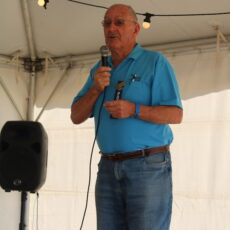One of the proposals being considered by the NSW government is that 30 billion litres of water be set aside within either Keepit or Split Rock Dams for Tamworth’s long-term water security.
These storages are not just large reservoirs on a map — they are essential to supporting flows in the Namoi River system, particularly during dry times within inland New South Wales. That system sustains our towns, industries, farms and natural environment.
Diverting a portion of its capacity, especially during drought years, would have serious consequences downstream for communities like Narrabri, Wee Waa, Boggabri and beyond all the way down the river system.
There is no question that Tamworth needs water security. Every community does — and Tamworth really struggled to maintain water services to residents and businesses during the last drought.
But the answer cannot come at the cost of others. Our side of the range has already felt the weight of scarcity.
During that same drought, places like Walgett were on their knees — with rivers dry, bore water failing and communities left in crisis. We cannot afford to repeat that kind of hardship.
This proposal risks locking in an unfair allocation — reserving water for one region at the direct expense of many others that are already under strain. Keepit and Split Rock were never designed to serve a single centre. Their flows are managed to strike a balance across the catchment and support communities and industry west of the range. Reworking that balance to favour one area would be deeply damaging and short-sighted.
Once water starts flowing back towards the coast — to places like Tamworth — it opens the door to further reallocation in the future. Thirty billion litres today could become 60 or even 150 billion litres over time. That is the real risk. If a precedent is set, it will be very difficult to reverse.
Other inland councils, including Gunnedah and Walgett, have also raised strong concerns. This is not about denying Tamworth its future — it is about protecting ours as well. Inland New South Wales should not be treated as a back-up supply for growing eastern centres. Sustainable solutions must be found — whether that means improving use of coastal catchments, expanding water recycling or managing demand more effectively closer to where it is needed.
Narrabri Shire Council is not just watching from the sidelines. We are actively meeting with public servants and politicians to ensure they understand the risks this proposal carries. We are presenting our case clearly, and we are standing with other affected councils to push for fairer, smarter water planning. We encourage residents to speak up too — the more voices raised, the harder we are to ignore.
Councillor Amanda Brown, general manager Eloise Chaplain, manager of governance and risk Jason Townsend and I recently attended the Australian Local Government Association (ALGA) conference. I am pleased to report that every motion submitted by Narrabri Shire Council — the most we have ever put forward — was adopted. These covered essential areas such as health, road funding, housing and disaster recovery. It was encouraging to see regional issues being taken seriously on the national stage.
Back home, Boggabri Library will soon introduce new opening hours. From Monday, July 14, the library will open Tuesdays from 10.30am to 4.30pm (with a lunch break from 12.30pm to 1.30pm), Wednesdays from 1.30pm to 5.30pm, and Thursdays from 9.00am to 1.00pm. These revised hours reflect how local residents are using the service and will be reviewed over time.
I also thank council staff for their continued work in keeping our public spaces clean and welcoming. While there has been a small increase in graffiti in some areas, our teams are responding quickly. I encourage property owners to do the same where graffiti appears on private fences or buildings. A tidy town shows pride and care — and we all benefit from that.
Lastly, thank you to everyone who took part in NAIDOC Week activities across the shire. It was an important time to reflect, learn and celebrate the contributions of Aboriginal and
Torres Strait Islander peoples in our communities.








